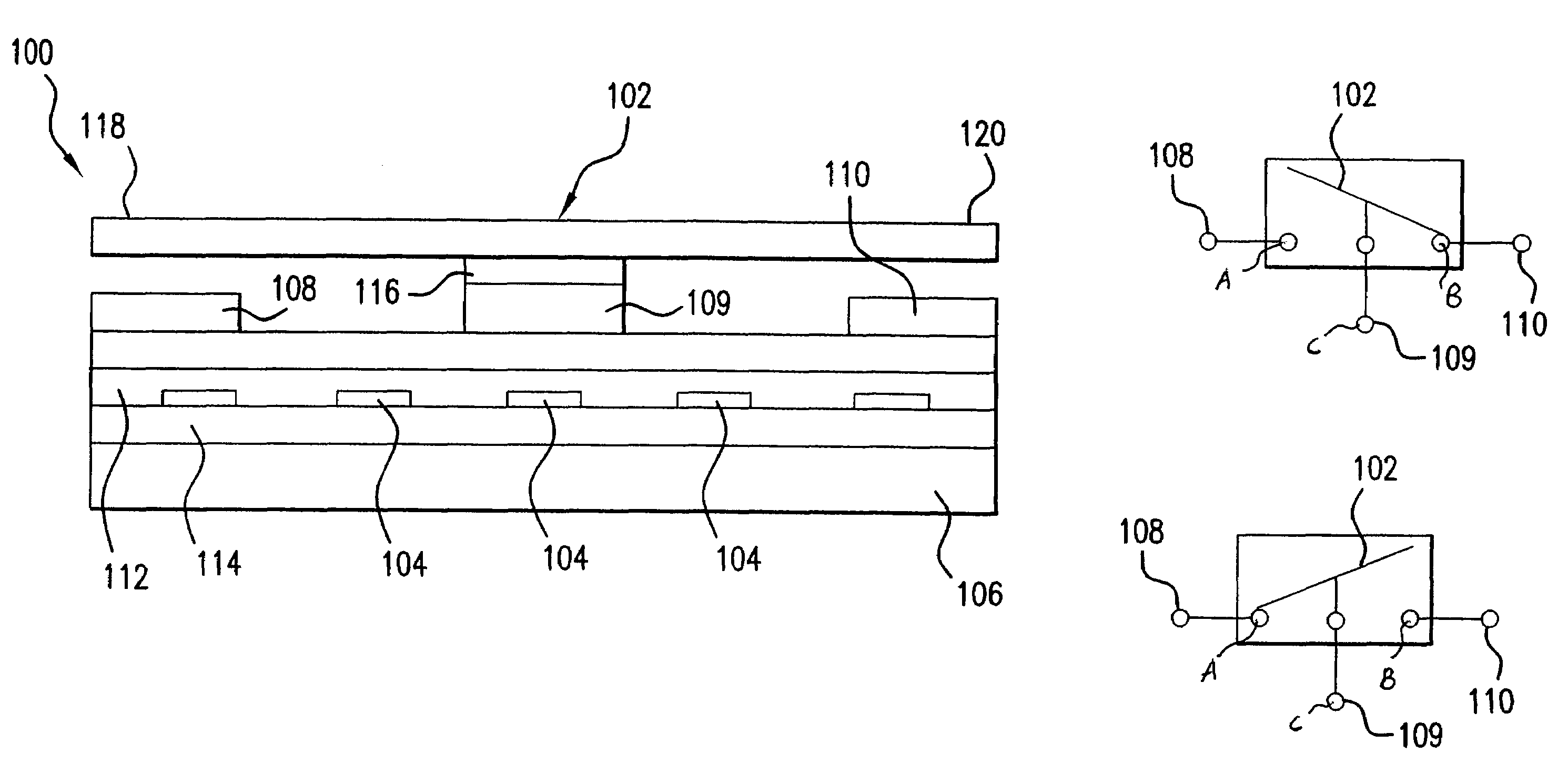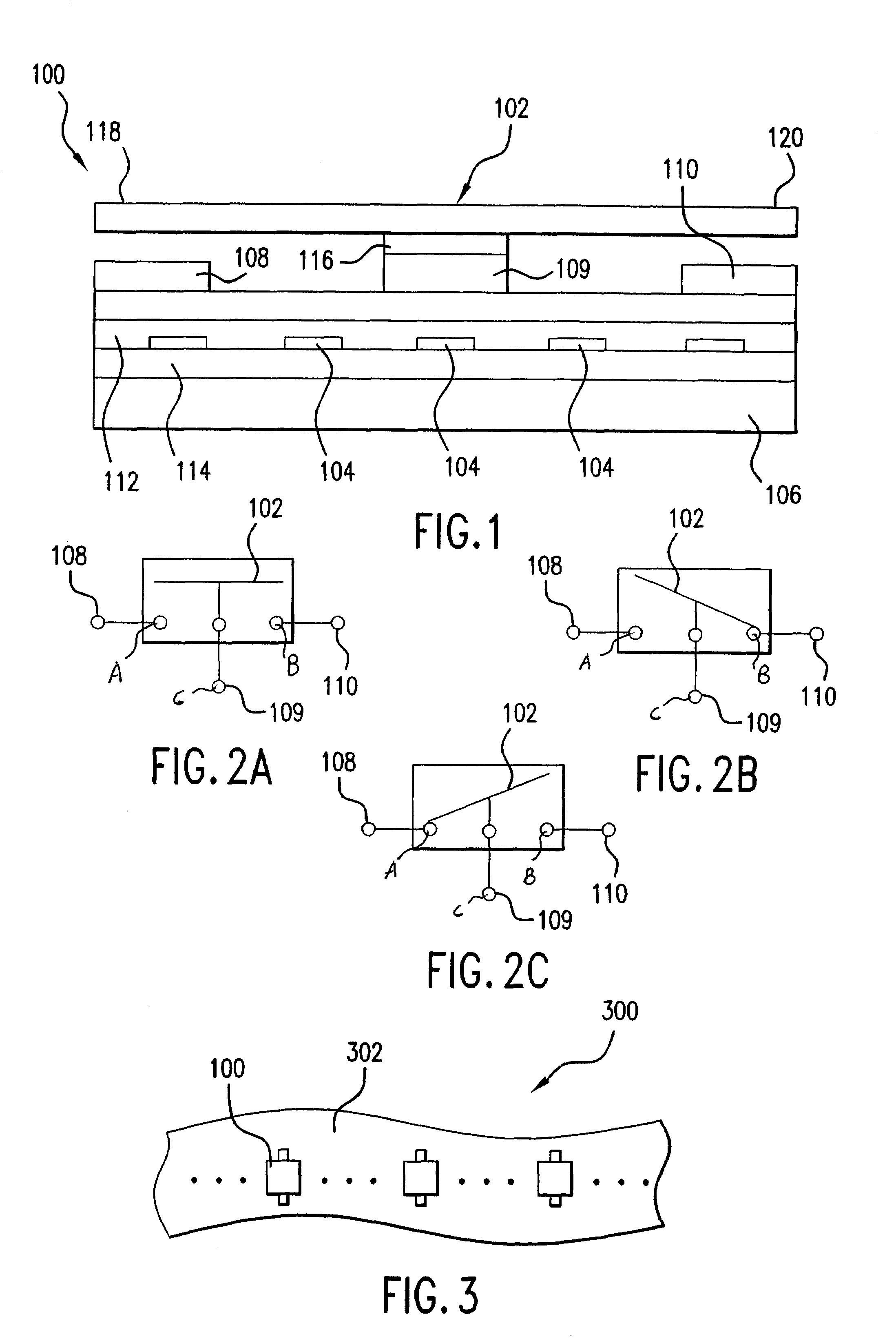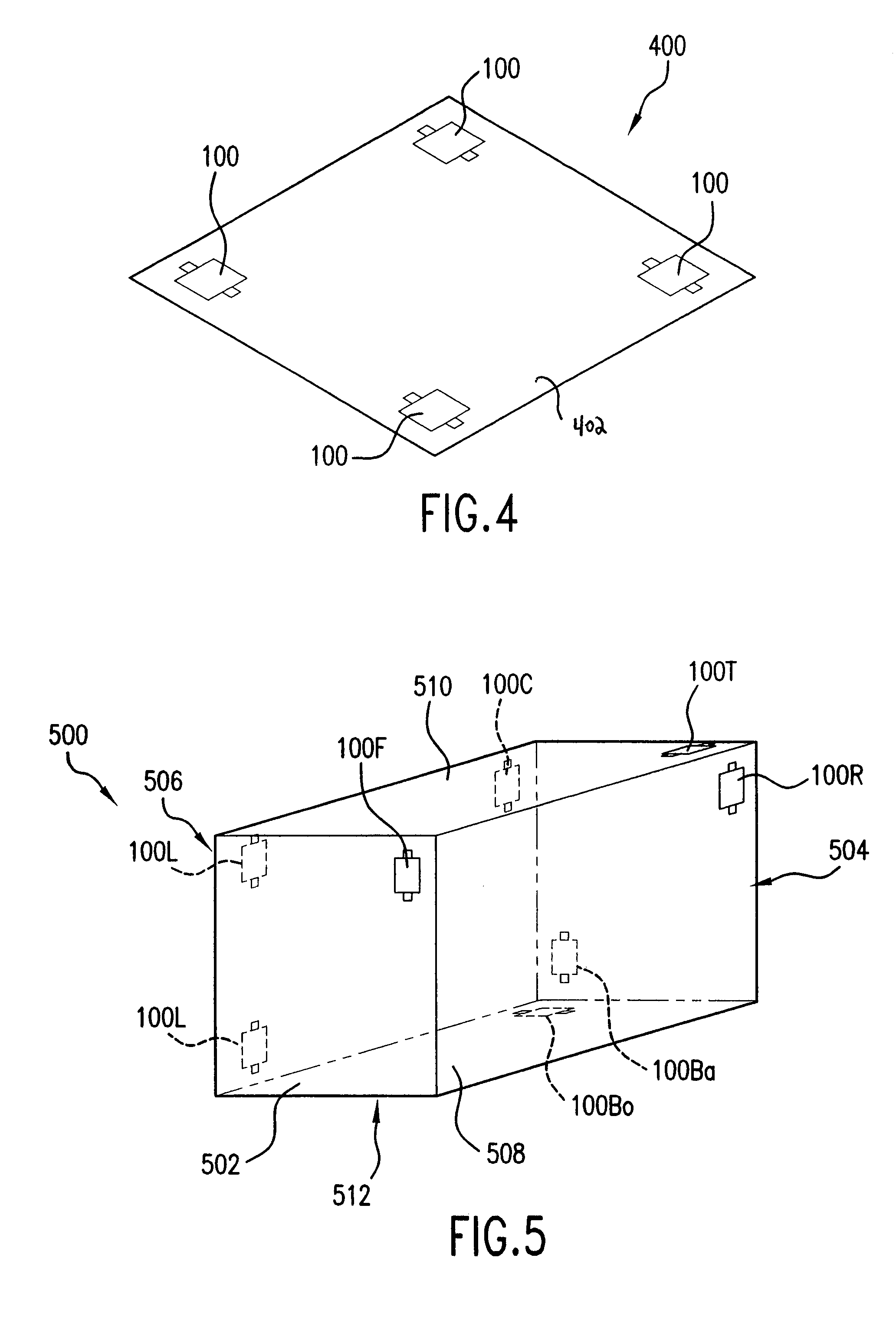Micro magnetic proximity sensor system
a proximity sensor and micro-magnetic technology, applied in the field ofproximity sensors, can solve the problems of increasing costs, preventing the use of conventional microelectronic packaging techniques, and complicating fabrication processes, and achieve the effect of convenient fabrication and us
- Summary
- Abstract
- Description
- Claims
- Application Information
AI Technical Summary
Benefits of technology
Problems solved by technology
Method used
Image
Examples
Embodiment Construction
[0053]Embodiments of the present invention provide a micro magnetic proximity sensor including a magnet for producing a magnetic field, a fixed contact, and a cantilever having magnetic material positioned therein to produce a torque on the cantilever in the magnetic field. The magnet can be fixedly mounted adjacent the cantilever, it can be mounted as, or in addition to, the magnetic material positioned in the cantilever, or it can be moveably mounted external to the micro magnetic proximity sensing apparatus. Similar sensors are disclosed in U.S. application Ser. No. 10 / 058,940, entitled “Micro Magnetic Proximity Sensor Apparatus and Sensing Method,” filed Jan. 28, 2002 and U.S. Prov. App. No. 60 / 332,841, entitled “Magnetic Proximity Sensors,” filed Sep. 17, 2001, which are both incorporated herein by reference in their entirety.
[0054]It should be appreciated that the particular implementations shown and described herein are examples of the invention and are not intended to otherw...
PUM
 Login to View More
Login to View More Abstract
Description
Claims
Application Information
 Login to View More
Login to View More - R&D
- Intellectual Property
- Life Sciences
- Materials
- Tech Scout
- Unparalleled Data Quality
- Higher Quality Content
- 60% Fewer Hallucinations
Browse by: Latest US Patents, China's latest patents, Technical Efficacy Thesaurus, Application Domain, Technology Topic, Popular Technical Reports.
© 2025 PatSnap. All rights reserved.Legal|Privacy policy|Modern Slavery Act Transparency Statement|Sitemap|About US| Contact US: help@patsnap.com



